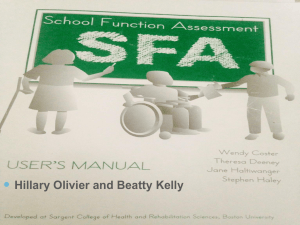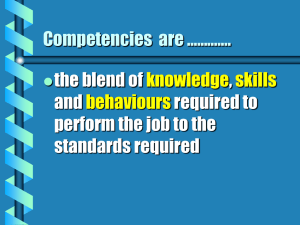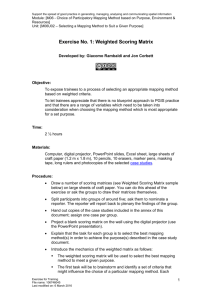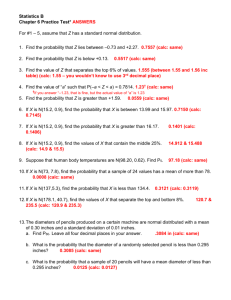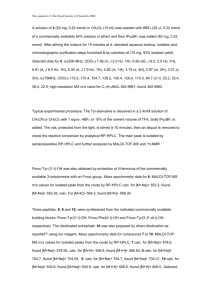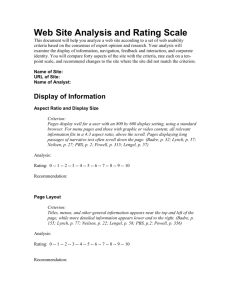weighted comparison matrix
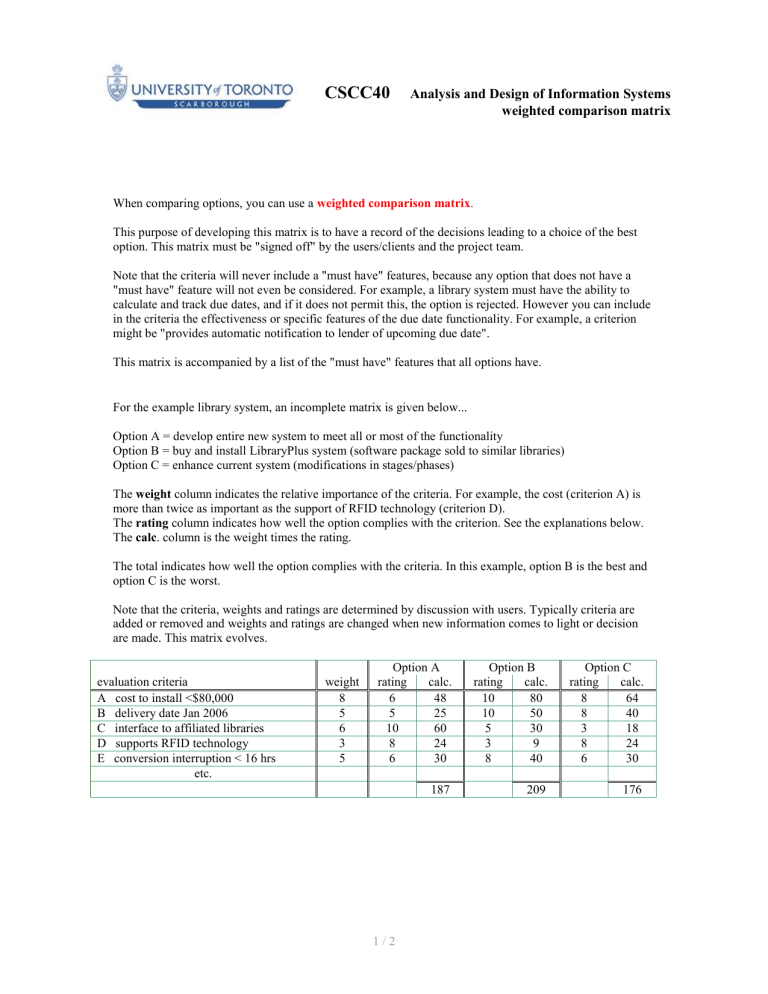
CSCC40
Analysis and Design of Information Systems
weighted comparison matrix
When comparing options, you can use a weighted comparison matrix .
This purpose of developing this matrix is to have a record of the decisions leading to a choice of the best option. This matrix must be "signed off" by the users/clients and the project team.
Note that the criteria will never include a "must have" features, because any option that does not have a
"must have" feature will not even be considered. For example, a library system must have the ability to calculate and track due dates, and if it does not permit this, the option is rejected. However you can include in the criteria the effectiveness or specific features of the due date functionality. For example, a criterion might be "provides automatic notification to lender of upcoming due date".
This matrix is accompanied by a list of the "must have" features that all options have.
For the example library system, an incomplete matrix is given below...
Option A = develop entire new system to meet all or most of the functionality
Option B = buy and install LibraryPlus system (software package sold to similar libraries)
Option C = enhance current system (modifications in stages/phases)
The weight column indicates the relative importance of the criteria. For example, the cost (criterion A) is more than twice as important as the support of RFID technology (criterion D).
The rating column indicates how well the option complies with the criterion. See the explanations below.
The calc . column is the weight times the rating.
The total indicates how well the option complies with the criteria. In this example, option B is the best and option C is the worst.
Note that the criteria, weights and ratings are determined by discussion with users. Typically criteria are added or removed and weights and ratings are changed when new information comes to light or decision are made. This matrix evolves. evaluation criteria weight
Option A rating calc.
Option B rating calc.
Option C rating calc.
A cost to install <$80,000
B delivery date Jan 2006
C interface to affiliated libraries
D supports RFID technology
E conversion interruption < 16 hrs etc.
8
5
6
3
5
6
5
10
8
6
48
25
60
24
30
187
10
10
5
3
8
80
50
30
9
40
209
8
8
3
8
6
64
40
18
24
30
176
1 / 2
CSCC40
Analysis and Design of Information Systems
The above matrix is usually followed by explanations of the ratings.
A. cost to install < $80,000
weighted comparison matrix
Option A full features $85,000, may be able to work without some for a year or two
Option B $50,000 which includes some customization
Option C $ 60,000 buys critical enhancements, could rise to $75,000 for full features
B. delivery date Jan 2006
Option A optimistic estimate is January 2006, but pessimistic is March 2006
Option B can be installed by November 2005
Option C can be altered in stages, with first increased functionality by October, but last functionality not until March 2006
C. interface to affiliated libraries
Option A full interface, easy to use
Option B need an intermediate stage, response time will be slow
Option C need to alter current database architecture to accommodate the functionality
D. supports RFID technology
Option A can be accomplished with purchased tag read/write software
Option B no available, vendor not interested in making changes
Option C same situation as option A
E. conversion interruption < 16 hrs
Option A full conversion will take about 24 hours, but can convert in stages of 4-6 hours each
Option B guaranteed by vendor, other customers agree that it can be done
Option C functionality will be implemented in stages of 4-6 hours each
2 / 2

